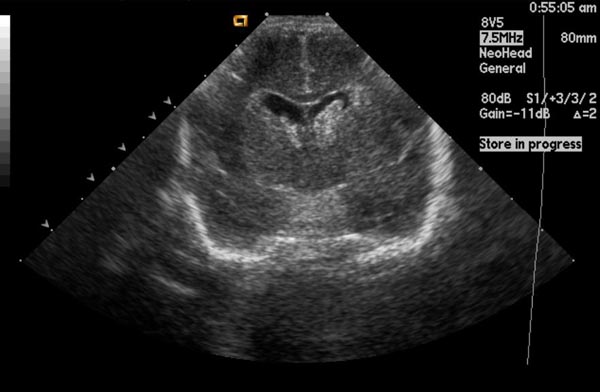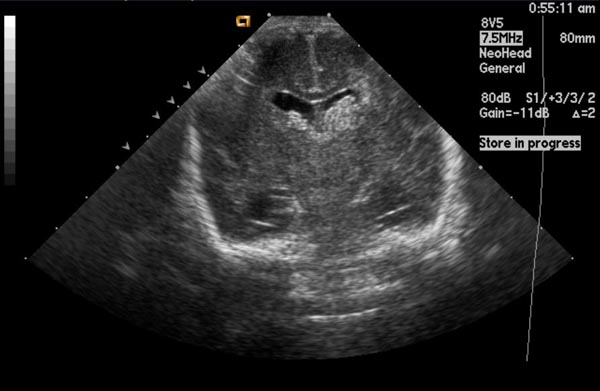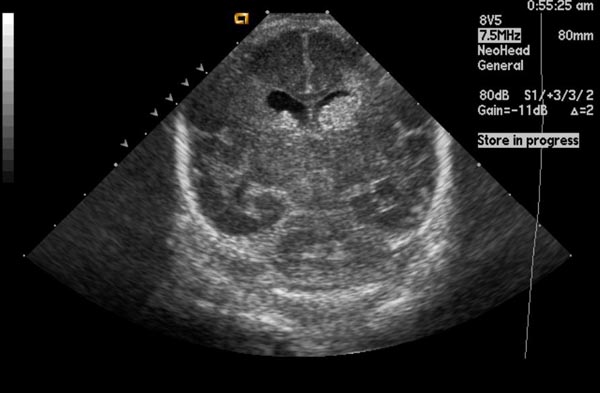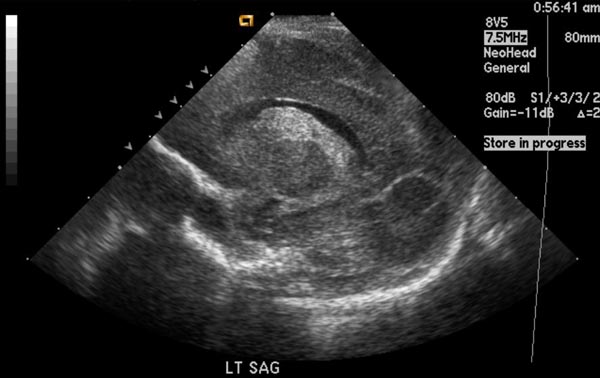Germinal matrix hemorrhage
| Germinal matrix hemorrhage | |
| eMedicine | radio/305 |
|---|---|
Editor-In-Chief: C. Michael Gibson, M.S., M.D. [1]
Overview
Germinal matrix hemorrhage is a bleeding into the subependymal germinal matrix with or without subsequent rupture into the lateral ventricle. The microcirculation in this particular area is extremely sensitive to hypoxia and changes in perfusion pressure. It is most frequent before 35 weeks gestation and is typically seen in low birth-weight (<1500g) premature infants.
Germinal matrix hemorrhage (GMH) and intraventricular hemorrhage (IVH) are the most common neurologic injuries in preterm neonates. The brain of a premature infant lacks the ability to autoregulate cerebral blood pressure. Fluctuations in cerebral blood pressure and flow can rupture the primitive germinal matrix vessels or lead to infarction of the metabolically active germinal matrix. The damage can extend into the periventricular white matter, resulting in significant neurologic sequelae, including cerebral palsy, mental retardation, and seizures. A common lesion that characterizes the neuropathology of GMH/IVH is bleeding into the subependymal germinal matrix, with or without subsequent rupture into the lateral ventricle. Sequelae of GMH/IVH include germinal matrix destruction, periventricular hemorrhagic infarction with subsequent encephalomalacia], and posthemorrhagic hydrocephalus. Because maturation of the germinal matrix vasculature occurs in the perinatal period for premature infants, most cases of GMH/IVH occur in the first week of life for these infants. Approximately 50% of cases of GMH/IVH occur in the first day of life. The major risk factors for GMH include a young gestational age, low birth weight, acute amnionitis, and exposure to antenatal steroids for less than 48 hours.
- Grade 1: Hemorrhage that is confined to the germinal matrix
- Grade 2: Extension of the hemorrhage into the lateral ventricles without hydrocephalus
- Grade 3: Ventricular hemorrhage with the presence of associated hydrocephalus
- Grade 4: Parenchymal hemorrhage
Ultrasound
- US is the primary modality for both screening and follow-up of GMH/IVH in neonates.
- Acute subependymal hemorrhage appears as a homogeneous echogenic mass, often in the caudothalamic groove. The hematoma becomes less echogenic over time, beginning with the central portion. Subsequent to eventual clot retraction, a subependymal cyst may develop, or a linear echo may result.
- Acutely, IVH also appears echogenic. Cerebrospinal fluid (CSF)–blood fluid levels may be observed. When large, the clot forms a cast of the ventricle.
References
- Enzmann D, Murphy-Irwin K, Stevenson D, Ariagno R, Barton J, Sunshine P (1985). "The natural history of subependymal germinal matrix hemorrhage". Am J Perinatol. 2 (2): 123–33. PMID 3913430.



